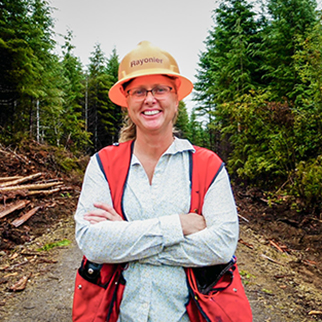Explore Green Jobs
Forest Engineer
Forestry companies need roads to access timber. That is where Forest Engineers come in. They design and supervise major projects in the forest, including road construction, bridge installations, harvest unit designs and the development of rock quarries. This work must be approached in a sustainable and environmentally-conscious manner.
Forest Engineers apply engineering principles to the maintenance of the working forest. Much of their work is dedicated to improving older roads and bridges, installing culverts, and other roadway construction, to ensure access points are up to current environmental standards. They spend a good amount of time out in the woods gathering data. When they aren’t working outdoors, they are in the office drawing up plans.



